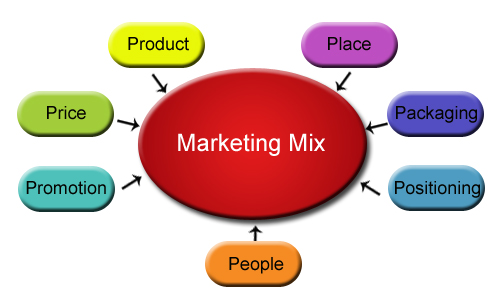Definition of marketing
There are numerous definitions of what marketing represents ... Marketing is conducting business activities that lie on the courses and services from producer to consumer. Activities that are...
Marketing mix and marketing research
Marketing is not only for the purpose of creating an image, but creating reputation among all stakeholders of the enterprise, and through the construction of identity and the implementation of communication activities the company can build an image, and reputation can ...
Marketing concept and tasks of marketing managemen...
Marketing concept is a business concept that finds great application in practice and which will continue to evolve, supplemented and amended in line with changes in the environment in which the companies are operating. Marketing concept
Actors in Micro environment
Success of the operation will depend largely on the efficiency of connection within a certain system. Because of that actors in micro environment are:
Macro environment of the company
n general micro-environment of the company operate a number of factors.
Tuesday, March 12, 2013
Determining marketing objectives in the plan
SWOT - analysis
Short-current planning of marketing
Alternative strategies at BCG-matrix
Depending on whether it will also depend on the strategy that the company should apply in respect of which of them will continue to invest, where to stop investing, to leave. In this regard, the company at the disposal of four strategies:
- Investment in order to increase market share
- Investing as much as necessary to maintain constant market share
- The collection of income
- Leaving
The first strategy is usually applied to question marks, but only those that projected sales volume is large, ie on IE having a chance to become the leading run. If those things do not have the perspective that may become worthless things, then the company should apply a strategy for leaving.
The second strategy of investment in order to maintain market share is applied to cash cow, ie those that generate more cash than is necessary for their manufacture and sale. Excess cash used for financing the leading Test run and things.
The third strategy of collecting revenue is applied to things that are a poor source of cash in an unclear future known as dogs, and also to test things and work out if they have no perspective.
The fourth strategy of leaving apply on dogs, or test things if they do not have the opportunity to develop, whereby funds are moving toward a things that much more promising.
BCG matrix quadrants
Determination of objectives and their characteristics:
Developmental stages of marketing planning
- Phase without a plan
- Stage budgeting
- Phase of the annual planning
- Phase of long-term planning
The need of approach with planning in marketing
is great so planning and marketing has gained prominence with the changes in technology and the development of science and technology which shortens the life span of the products, increases the time necessary for the reaction responsible managers without waiting mistakes competitors.
Monday, March 4, 2013
Macro environment of the company
Demographic environment which includes:
- Number and population growth
- Age
- Education
- Family
- Geographical movement of the population
- Ethnic and racial structure
Commercial (economic) environment:
- Distribution of income
- Savings, debts, credit opportunities for taking
- Modification of the model of consumer behavior
Physical (natural) environment:
- Lack of some basic raw materials
- Increasing energy costs
- Increasing the level of pollution
- Limitations in the management of natural resources
Technological environment:
- Quick pace technological change
- Unlimited possibilities for innovation
- Great investment for research and development
- Concentration of minor improvements rather than major breakthroughs
- Increasing the number of regulations on technological changes
Political and legal environment:
- Legislation regulating the operation
- The influence of various groups with special interests
- Consumerism
Socio-cultural environment:
- Beliefs, values, norms
- Culture and subculture
Actors in Micro environment
Customers loyalty and Marketing enviropment
Micro-environment includes all actors that influence the ability of the enterprise to meet its markets (buyers), while macro-environment contains social forces that act on all enterprises.
Marketing concept and tasks of marketing management
Marketing mix and marketing research
Definition of marketing



































